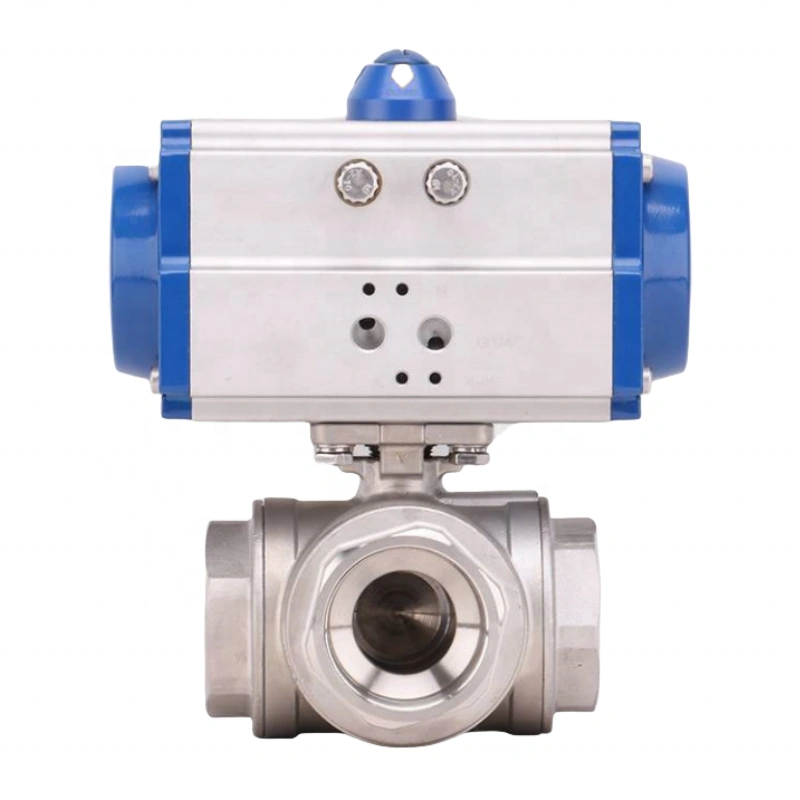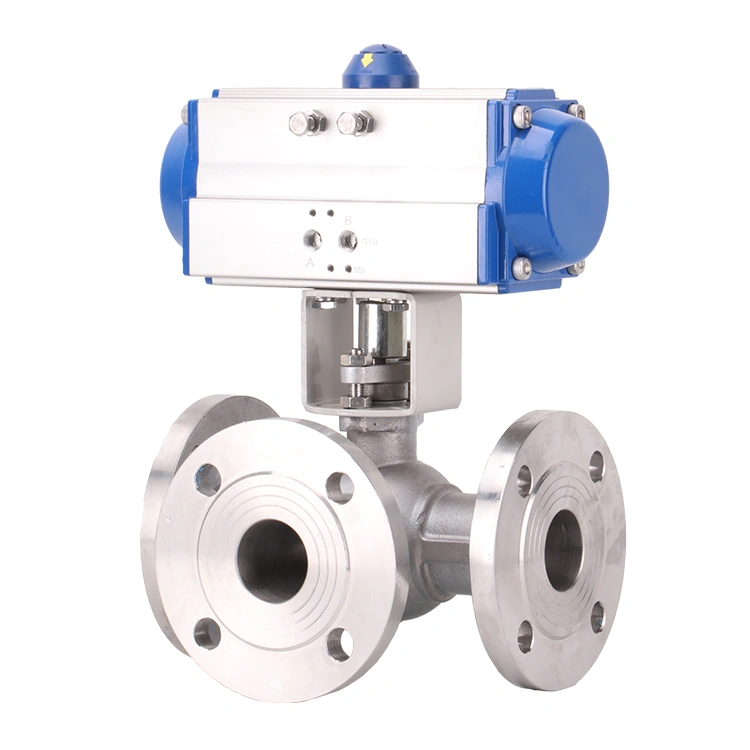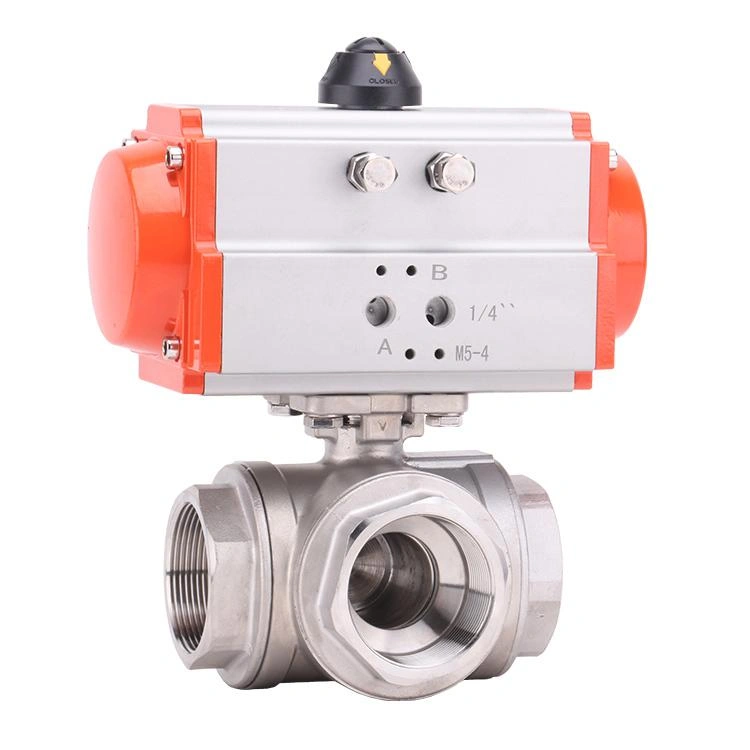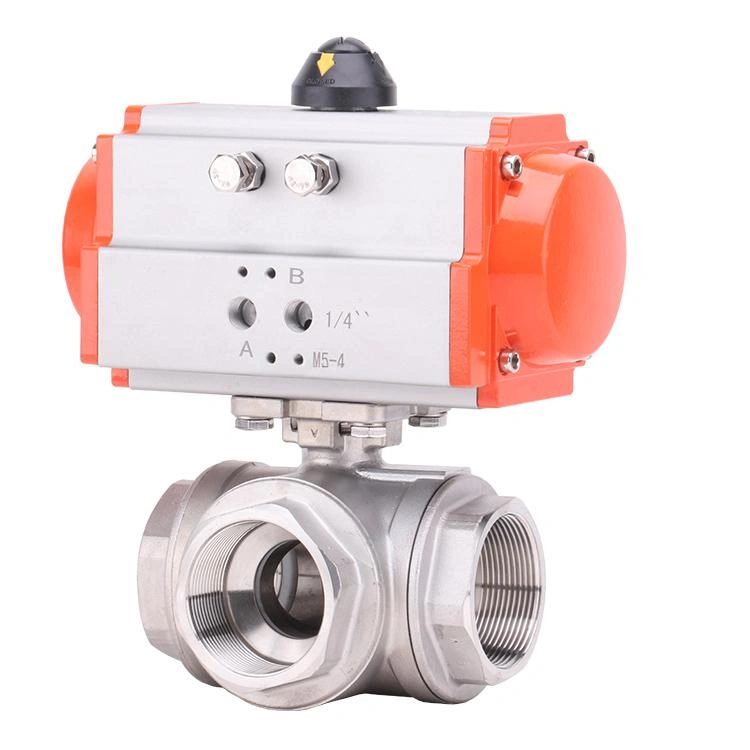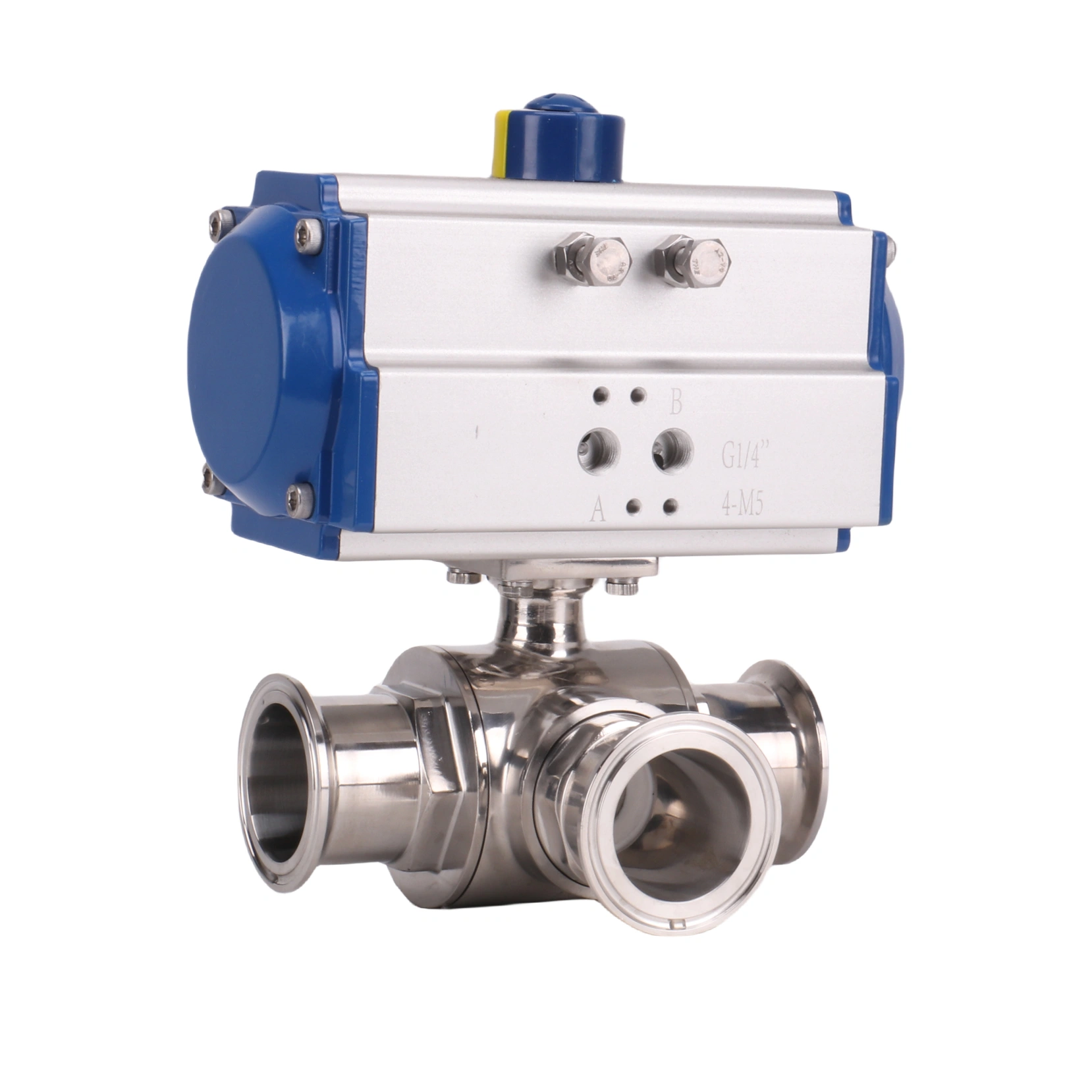- DN15-300mm
- BALL
- General
- Pneumatic
- Medium/Normal Temperature
- Water
- SS304
- ANSI JIS DIN
Specification
Pneumatic 3-way Ball Valve ISO ANSI Stainless Steel Reversing Valve Switching Valve
The Pneumatic Three-way Ball Valve can be L-shaped or T-shaped. The pneumatic L-shaped three-way ball valve is used to switch the flow direction of the medium and can connect two channels that are perpendicular to each other. The pneumatic T-shaped three-way ball valve is used for medium diversion, merging and flow direction switching. , T-shaped tee can connect three channels to each other or connect two of them. Pneumatic three-way ball valves generally adopt a three-seat structure and are widely used in pipeline systems such as water supply, petrochemical, metallurgy, mining, textile, energy, paper making, food, steel, etc. to switch the flow direction of the medium and to divert the medium or mix fluids.
|
Bore |
DN15~300mm |
|
Pressure |
1.6,2.5,4.0,6.4Mpa;150Lb.300Lb,600Lb |
|
Structure |
Flange,Inside thread |
|
Body/Seat material |
Carbon steel (WCB), |
|
Seat material |
PTFE, PPL, H,Y |
|
Mode of action |
The double-acting/single-acting |
|
Control |
By-pass flow,flow,EXCHANGE |
Product Overview
Newway Pneumatic 3-Way Ball Valve: A Precision Solution for Industrial Fluid Diverting Control
I. Technical Overview
The Newway pneumatic 3-way ball valve is an automated control device designed for medium diversion, confluence, and direction switching in industrial pipelines, covering a full size range from DN15 to DN300. Available in L-type and T-type structures, the L-type enables 90° direction switching between two channels, while the T-type allows arbitrary flow connection among three channels. Made of 304/316 stainless steel forged body, with a nominal pressure of 1.6–6.4MPa (150–600LB) and working temperature of -20℃–232℃ (up to 350℃ for high-temperature models), it is widely used in automated fluid control for chemical, petroleum, water treatment, and HVAC industries.
II. Core Product Features
(A) Three-Way Flow Control Design
L/T Mode Switching: The L-type switches between two perpendicular channels (e.g., medium redirection), while the T-type connects three channels for diversion or confluence, with a switching accuracy of ±0.5° to meet DCS system precision requirements;
Low Flow Resistance: The flow path follows ASME B16.34, with a resistance coefficient ≤0.8 (same-diameter pipeline), reducing pressure loss by 40% compared to traditional globe valves, saving ~12,000kWh annually;
Bidirectional Bubble-Tight Sealing: The seat uses PTFE + carbon fiber reinforced material with spring preloading, achieving bidirectional sealing (leakage rate ≤1×10⁻⁹m³/s), compliant with API 598 Class IV.
(B) Pneumatic Drive Advantages
Rapid Response System: Double-acting pneumatic actuator responds within ≤0.8s (DN100 model), supporting 0.4–0.7MPa air pressure, integrable with solenoid valves, positioners, and other accessories;
Dual-Mode Actuation: Offers double-acting (pneumatic bidirectional) and single-acting (spring return) actuators. The single-acting type automatically resets to a safe position during air loss, suitable for emergency shutdown;
Explosion-Proof Design: Optional ATEX-certified actuators suit Class I, Div. 1 hazardous areas, complying with petrochemical explosion-proof standards.
(C) Material & Structural Advantages
Fully Forged Stainless Steel Body: Forged from 304/316 stainless steel (forging ratio ≥4:1), with tensile strength ≥515MPa, resistant to chloride stress corrosion for coastal and chemical environments;
Maintenance-Free Design: The stem uses a blowout-proof stepped structure (ASME B16.34) with V-type PTFE packing, lasting 100,000 cycles with a 24-month maintenance interval;
Lightweight Compact Design: 25% lighter and 30% more space-efficient than cast steel valves, facilitating installation in high-altitude or confined spaces.
III. Key Technical Attributes
|
Parameter Category |
Specifications |
Expansion Options |
|
Size Range |
DN15–DN300 (1/2″–12″) |
Custom DN400+ special sizes |
|
Pressure Rating |
PN16–PN64 (1.6–6.4MPa) |
Class 150–600 (optional) |
|
Body Material |
304 (06Cr19Ni10), 316 (06Cr17Ni12Mo2) |
316L, duplex steel 2205 (acid-resistant) |
|
Seal Material |
PTFE, RPTFE, Viton fluoroelastomer |
PEEK (260℃ resistance), Stellite hard seal |
|
Drive Mode |
Pneumatic (double/single-acting) |
Electric (explosion-proof), manual, hydraulic |
|
Testing Standard |
1.5x hydrostatic test (30-min hold) |
API 598, ISO 15848-1 (low leakage certification) |
IV. Precision Manufacturing Processes
(A) Forging & Machining
Body Forming: Stainless steel billets forged by 1000-ton friction press, with ASTM No.7+ grain size, UT-tested for defects (sensitivity ≥Φ1.2mm);
Ball Precision Machining: 5-axis CNC ground to ≤0.005mm roundness, ≤0.01mm fit with seat, Ra≤0.8μm roughness for sealing precision;
Actuator Assembly: Pneumatic actuator cylinders undergo anodic hardening, end caps use metal polyester coating, and output shafts are electroless nickel-plated for corrosion resistance.
(B) Quality Control
Full Inspection: 100% air pressure test (0.6MPa, 15-min hold), CMM measurement for key dimensions (accuracy ±0.02mm);
Life Testing: Sampled for 50,000 cycles (under pressure) with ≥95% sealing retention, exceeding industry standards (30,000 cycles);
Certifications: CE, SIL functional safety certified, some models comply with API 6D and ISO 9001.

